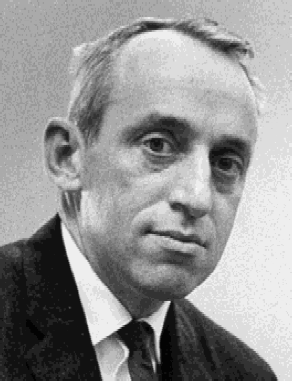Source: "Money and Finance in the Macro-Economic Process" (1982), p. 12
Famous James Tobin Quotes
Source: "A general equilibrium approach to monetary theory" (1969), p. 21 as cited in: Sılvio Rendon, "Non-Tobin’s q in Tests for Financial Constraints," 2009
Source: "A general equilibrium approach to monetary theory" (1969), p. 29 as cited in: Andrés, Javier, J. David López-Salido, and Edward Nelson. " Tobin's imperfect asset substitution in optimizing general equilibrium http://research.stlouisfed.org/wp/2004/2004-003.pdf." Journal of Money, Credit and Banking (2004): 665-690.
James Tobin, "Keynes' Policies in Theory and Practice", Challenge (1983).
1970s and later
James Tobin, in Conversations with Economists (1983) by Arjo Klamer
1970s and later
Nordhaus, William D., and James Tobin. " Is growth obsolete? http://www.nber.org/chapters/c7620.pdf." Economic Research: Retrospect and Prospect Vol 5: Economic Growth. Nber, 1972. 1-80.
1970s and later
James Tobin Quotes about hope
"Reflections on Japanese Political Economy" (1999)
James Tobin, "Keynes' Policies in Theory and Practice", Challenge (1983).
1970s and later
"Reflections on Japanese Political Economy" (1999)
"Price Flexibility and Output Stability: An Old Keynesian View" (1993)
"James Tobin - Biographical" (1981)
James Tobin Quotes about time
Source: "Money and Finance in the Macro-Economic Process" (1982), p. 12
“Keynesian economics was, in the context of those times, essentially conservative.”
James Tobin, "A Revolution Remembered", Challenge (1988).
1970s and later
Context: Keynesian economics was, in the context of those times, essentially conservative. The message was that capitalism was not doomed; its major failing, chronic large-scale unemployment, could be remedied fairly easily, by intelligent use of the fiscal and monetary instruments governments already had at their disposal. This message was not welcome news to Marxists committed to the view that the system was no longer structurally capable of prosperity and progress.
"Price Flexibility and Output Stability: An Old Keynesian View" (1993)
James Tobin Quotes
"James Tobin - Biographical" (1981)
Context: For me, growing up in the 1930s, the two motivations powerfully reinforced each other. The miserable failures of capitalist economies in the Great Depression were root causes of worldwide social and political disasters. The crisis triggered a fertile period of scientific ferment and revolution in economic theory.
“Markowitz's main interest is prescription of rules of rational behaviour for investors;”
Tobin, James. " Liquidity preference as behavior towards risk http://web.uconn.edu/ahking/Tobin58.pdf." The review of economic studies (1958): 65-86.
1950s-60s
Context: A forthcoming book by Harry Markowitz, Techniques of Portfolio Selection, will treat the general problem of finding dominant sets and computing the corresponding opportunity locus, for sets of securities all of which involve risk. Markowitz's main interest is prescription of rules of rational behaviour for investors; the main concern of this paper is the implications for economic theory, mainly comparative statics, that can be derived from assuming that investors do in fact follow such rules.
Tobin, James. " Estimation of relationships for limited dependent variables http://cowles.econ.yale.edu/P/cp/p01a/p0117.pdf." Econometrica: journal of the Econometric Society (1958): 24-36.
1950s-60s
"Reflections on Japanese Political Economy" (1999)
"Price Flexibility and Output Stability: An Old Keynesian View" (1993)
Source: "A general equilibrium approach to monetary theory" (1969), p. 29 As cited in: William Pool. Brookings Papers on Economic Activity, 2, (1976), p. 292
"Reflections on Japanese Political Economy" (1999)
"Price Flexibility and Output Stability: An Old Keynesian View" (1993)
